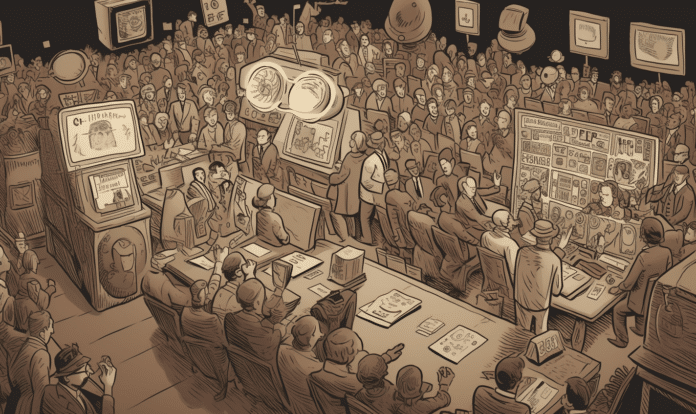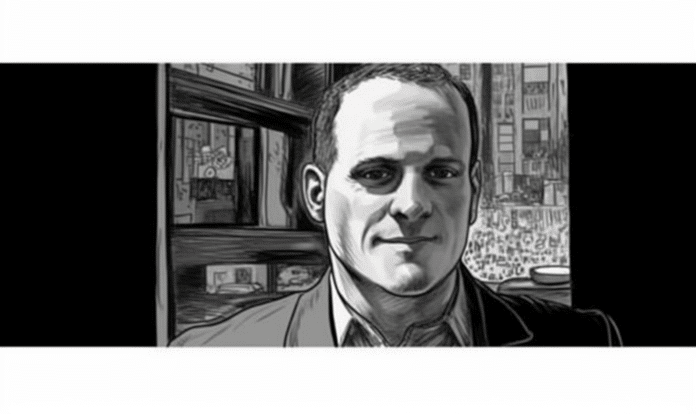In the wake of a series of controversies and mounting concerns over hate speech, racism, and extreme anti-Semitism on Twitter, all eyes are now on Linda Yaccarino, the newly appointed CEO, to see if she can save the platform from its current state of toxicity.
Yaccarino’s arrival comes amid a sharp decline in ad revenue as major corporations distance themselves from the social media giant, fearing its association with hate-filled content under Elon Musk’s ownership.
Since Musk’s acquisition of Twitter in October 2022, the platform has witnessed a disturbing surge in antisemitic posts, according to research conducted by CASM Technology and the Institute for Strategic Dialogue.
The analysis revealed a “major and sustained spike” in English-language antisemitic tweets, with the weekly average increasing by 106 percent in the three months after Musk’s takeover. This concerning trend has prompted high-profile Jewish organizations to criticize Twitter for its lack of proactive response to the issue.
The responsibility to address this situation now falls on Linda Yaccarino, a seasoned media executive known for her tough negotiating style and deep industry relationships. However, some skeptics suggest that Yaccarino’s appointment may be an attempt by Musk to deflect blame, while he himself lacks the desire to control the platform’s anti-Jewish rhetoric.
Ironically, Yaccarino’s previous stance on social media’s unpredictability and the potential hazards it poses to advertisers may now come back to haunt her. As the former chief advertising executive of NBCUniversal, she had warned about the lack of brand safety and the erosion of trust associated with user-generated content on social media platforms. Her task now is to convince those same advertisers to return to Twitter, despite their concerns about its toxic environment.
Yaccarino’s vast experience and industry knowledge make her well-suited for the job, according to Sir Martin Sorrell, founder of marketing services giant WPP. Having spent time with Yaccarino at advertising events, Sorrell believes she understands the needs of advertisers in both traditional and digital contexts. However, the challenge remains formidable, as Twitter’s ad sales have plummeted from approximately $5 billion to what some estimate is under $1 billion due to brands hesitating to align themselves with Musk’s relaxed content moderation policies.
The relationship between Musk and Yaccarino has already shown signs of tension, with the new CEO cautiously criticizing Musk’s decision-making and his late-night Twitter activity. While Yaccarino suggested holding Musk to a higher standard of conduct due to his ownership of the platform, Musk defended his commitment to freedom of speech. This disagreement raises questions about the extent to which Yaccarino will be able to steer Twitter’s course without hindrance.
Critics have also scrutinized Yaccarino’s background, looking for hints about her potential decision-making strategy. As chair of the taskforce on the future of work at the World Economic Forum, she has faced conspiracy theories and criticism from some quarters. Concerns have been raised about her potential impact on Twitter’s absolutist free speech policy, given her involvement with events criticized by Musk. However, Musk has urged critics to give Yaccarino a chance while reiterating his commitment to preserving free speech on the platform.
Yaccarino’s task to revitalize Twitter’s advertising business is undoubtedly challenging. With her deep industry connections and professionalism, she possesses the necessary qualifications to lead the platform’s resurgence. However, the crucial question remains: Will Musk provide her with enough autonomy to address the brand safety issues that advertisers are deeply concerned about?
As Yaccarino takes the helm of Twitter, her primary focus will be to rebuild trust with advertisers who are increasingly wary of associating their brands with a platform tainted by hate and controversy. The decline in ad revenue, coupled with the exodus of major corporations, has dealt a severe blow to Twitter’s financial prospects. The company’s reputation as a safe advertising environment has been tarnished, and it will be Yaccarino’s responsibility to restore faith in the platform.
Yaccarino’s extensive industry experience and her ability to forge strong relationships with advertisers give her an advantage in this uphill battle. Her tenure at NBCUniversal and Turner Broadcasting has equipped her with a deep understanding of the advertising landscape and the challenges faced by brands in the digital age. She has successfully navigated the complexities of the media industry, and her negotiation skills have earned her the nickname “Velvet Hammer.”
However, Yaccarino’s task is not simply to woo advertisers back to Twitter; it is also to address the underlying issues of hate speech, racism, and extreme anti-Semitism that have plagued the platform. While Twitter has taken steps to combat these problems in the past, the recent surge in hateful content demands a more proactive approach.
The question of whether Yaccarino can truly save Twitter from its toxic environment goes beyond her professional capabilities. It delves into the intentions and actions of Elon Musk, the platform’s owner. Musk’s commitment to freedom of speech has been at odds with the need to regulate harmful content, and this ideological clash has fueled concerns about his willingness to tackle the platform’s underlying issues.
Musk’s decision to appoint Yaccarino as CEO could be seen as an attempt to shift blame or appease critics. While Yaccarino’s reputation may suffer if Twitter’s anti-Jewish rhetoric remains unchecked, it ultimately falls on Musk to demonstrate a genuine commitment to combating hate speech and fostering a more inclusive online community.
The road ahead for Yaccarino is undoubtedly challenging. She must strike a delicate balance between reestablishing Twitter as an attractive advertising platform and ensuring the platform takes a strong stance against hate and extremism. The success of her tenure will depend not only on her leadership and industry expertise but also on the willingness of Elon Musk and the Twitter team to enact meaningful change.
Twitter has the potential to be a powerful platform for positive dialogue and connection. It has been a catalyst for social movements, a source of news and information, and a platform for public discourse. However, its potential can only be fully realized if it can effectively address the issues of hate, racism, and extreme anti-Semitism that have plagued it in recent years.
As Linda Yaccarino assumes her role as CEO, the eyes of the public, advertisers, and advocacy groups will be on her. Her success or failure in transforming Twitter into a more inclusive and responsible platform will not only shape the future of the company but also influence the broader conversation around online hate speech and the responsibilities of social media platforms.
Twitter’s fate hangs in the balance, and it is up to Yaccarino and the collective efforts of the Twitter team to determine whether the platform can rise above its current challenges and become a beacon of positive engagement in the digital sphere. The world is watching, and the stakes could not be higher.





















